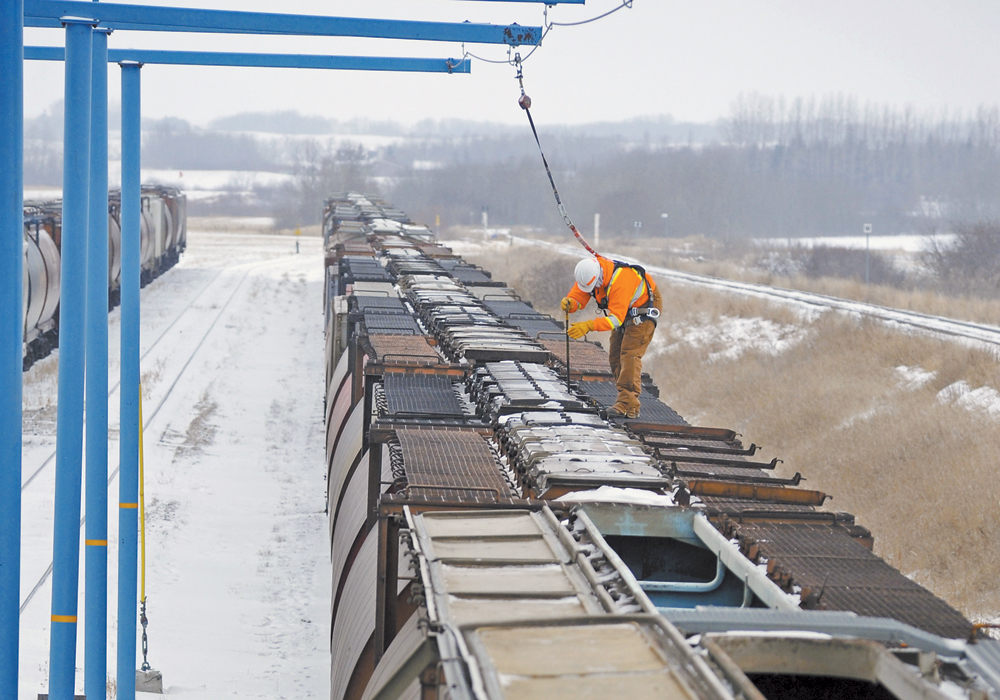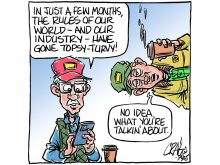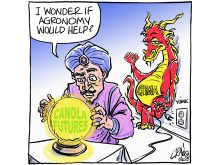It’s puzzling that both the governing Liberals and the Conservative government before them have avoided a full costing analysis for moving grain by rail.
Rail companies are regulated with maximum revenue entitlements on grain transportation, in part because there are only two major carriers, so farmers are justified in seeking to know how much it actually costs to move their grain.
For years, prairie farm groups have pressed the federal government to complete a costing review for grain movement. They want the maximum revenue entitlements adjusted based on such a review. As reported last week, Transport Minister Marc Garneau wrote the Saskatchewan Wheat Development Commission saying no such review will be conducted.
Read Also

High prices see cow-calf producers rushing to incorporate
Farm accountants are reporting a steady stream of cow-calf producers rushing to get their operations incorporated ahead of selling their calves this fall.
“A costing review that aims to further lower the maximum revenue entitlement (MRE) would not advance our objective of promoting network efficiency and investment over the long term,” Garneau wrote. “As it stands, grain is the only commodity subject to freight regulation, and freight rates for grain are already among the lowest of all commodities.”
There’s a bit more to it than that.
A costing review in 1992 — the last time this was done — determined that rail companies should make about 20 percent profit on grain movement. It’s also worth noting that governments bought thousands of rail cars for railway companies to use.
In 2016, a review by David Emerson, a former Conservative cabinet minister, recommended that the maximum revenue entitlements for railroads be removed in about seven years to encourage rail companies to invest more in infrastructure.
There is no way of knowing, however, how much of that extra money the railway companies would invest in developing more infrastructure.
Over the last few decades, rail companies have achieved efficiencies that have made them more profitable.
Indeed, a report by business management consultants Travacon Research, concluded that from 2008-14, rail companies have earned up to $2 billion more than the 20 percent profit threshold.
Railroad companies could reasonably argue they have invested in capital and technical improvements, so they should enjoy the benefits.
Yes, but farmers contributed to those efficiencies, also known as operating ratios, when rail companies tore up lower-volume tracks, sold some tracks and reduce service on others. As well, elevators consolidated. All this meant some farmers had to truck their grain farther and incur the accompanying costs. How much did the farmer pay for that? We don’t know.
The Liberal government promised a costing review before the MRE was changed. Yet changes last year in Bill C-49 induced both Canadian Pacific Railway and Canadian National Railway to invest millions of dollars in new high-throughput hopper cars.
The rail companies’ investment is welcome news. Given the federal government’s goal of increasing agricultural exports, more infrastructure investment will be needed.
A review of the maximum revenue entitlements would provide baseline data to help establish future policy direction regarding grain movement.
After more than 150 years of exporting grain, we are still learning how to do it efficiently. A costing review would provide valuable information on which to base decisions.
Karen Briere, Bruce Dyck, Barb Glen, Brian MacLeod and Michael Raine collaborate in the writing of Western Producer editorials.















